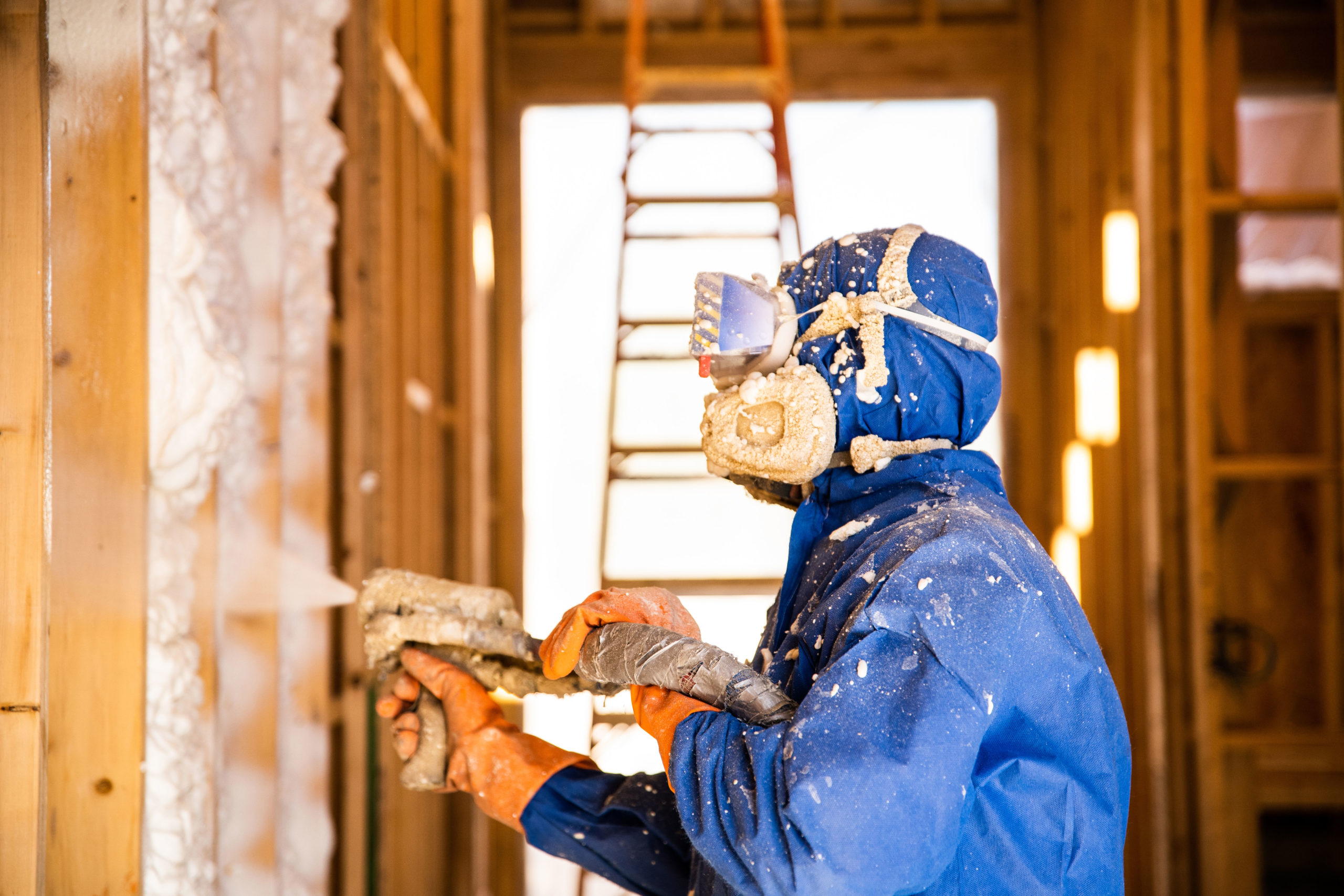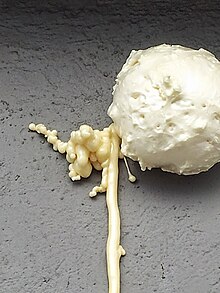Frequently Asked Questions About Spray Foam Installation and Usage
Frequently Asked Questions About Spray Foam Installation and Usage
Blog Article
Spray Foam: The Ultimate Option for Air Sealing and Insulation
Spray foam insulation has emerged as a leading remedy for reliable air securing and thermal insulation, using a distinct combination of residential or commercial properties that set it apart from conventional techniques. Understanding the complete extent of its benefits, installation procedures, and contrasts with other insulation types is critical for making notified decisions.
What Is Spray Foam?
Spray foam is a versatile insulation product that integrates the principles of air securing and thermal resistance to improve energy performance in buildings. Made up mostly of polyurethane or other comparable substances, spray foam is applied as a fluid that broadens upon call with surface areas, creating a strong, continuous layer of insulation. This one-of-a-kind building enables it to fill spaces, cracks, and gaps that conventional insulation products may overlook, supplying a superior air seal.
There are 2 main kinds of spray foam: open-cell and closed-cell. Open-cell spray foam is lighter and much more adaptable, providing superb sound absorption and a reduced R-value per inch - Spray Foam. In contrast, closed-cell spray foam is denser, supplying a higher R-value, wetness resistance, and included structural stability to building elements
The application procedure generally entails customized tools, making sure a seamless application that follows numerous substratums, including metal, concrete, and timber. This flexibility makes spray foam suitable for both brand-new building and constructions and retrofitting existing structures. Its capability to develop an airtight obstacle dramatically adds to minimizing power consumption and improving indoor air high quality, therefore making it a preferred option among house owners and building contractors alike.
Advantages of Spray Foam Insulation
One of the most significant advantages of spray foam insulation is its outstanding capacity to develop a continual air obstacle, which effectively minimizes energy loss. Unlike traditional insulation materials, spray foam expands to fill cracks and gaps, ensuring that air leakage is significantly decreased. This characteristic not only enhances power performance yet additionally causes reduce utility bills over time.
Additionally, spray foam insulation provides premium thermal resistance, adding to a much more steady indoor environment. Its high R-value per inch permits for reliable insulation in restricted spaces, making it perfect for attic rooms, wall surfaces, and crawl areas. Additionally, the moisture-resistant homes of spray foam help prevent mold and mildew and mildew growth, advertising healthier living conditions.
An additional vital benefit of spray foam insulation is its sound-dampening high qualities (Spray Foam). It efficiently lowers noise transmission in between spaces, creating a quieter and a lot more comfortable home atmosphere. The resilience of spray foam additionally attracts attention, as it does not droop or resolve in time, keeping its performance throughout its life expectancy
Just How Spray Foam Works
Recognizing how spray foam insulation functions is vital for valuing its effectiveness in air securing and thermal resistance. Spray foam insulation includes two key components: isocyanate and polyol material. When these parts are mixed, they go through a chemical reaction that triggers the product to expand quickly, developing a thick foam that fills fractures, voids, and dental caries.
As the foam expands, it follows surface areas, creating an airtight seal that substantially reduces air infiltration. This characteristic makes spray foam insulation extremely reliable at protecting against drafts and moisture penetration, which can result in energy loss and damage gradually. In addition, the closed-cell version of spray foam offers superior thermal resistance due to its rigid structure, efficiently lessening warm transfer.
The special properties of spray foam allow it to conform to irregular surface areas, making certain comprehensive coverage and a smooth obstacle. Therefore, spray foam insulation not just improves energy efficiency but also adds to boosted interior air high quality by decreasing the accumulation of toxins and irritants. Eventually, understanding the mechanics behind spray foam emphasizes its duty as a remarkable go option for insulation and air sealing in both industrial and domestic applications.
Setup Refine Introduction

Before setup, the room must be appropriately cleaned and prepped, making sure that surface areas are without wetness, dirt, and particles. Due to the fact that impurities can compromise adhesion and overall performance, this step is essential. When the area is prepared, the application includes blending both elements of the spray foam, which increases upon call and loads voids properly.
Educated specialists need to perform the installment, click here now making use of customized tools to make certain consistent insurance coverage and optimum thickness. Security safety measures, including wearing protective equipment and making certain correct air flow, are necessary throughout this process. After application, the foam usually remedies rapidly, forming a strong obstacle that improves energy performance.
Contrasting Spray Foam to Standard Insulation
When examining insulation options, spray foam insulation stands out in contrast to conventional products such as fiberglass and cellulose. Unlike fiberglass and cellulose, which can enable air seepage, spray foam broadens upon application, loading spaces and holes to produce an impermeable seal.
Furthermore, spray foam gives a higher R-value per inch than typical insulation types, supplying more reliable thermal resistance in a thinner profile. This characteristic is especially helpful precede with minimal cavity deepness. Furthermore, spray foam is resistant to dampness and mold growth, which can be a substantial interest in cellulose and fiberglass, especially in moist environments.
However, spray foam insulation usually lugs a greater in advance cost than its conventional equivalents. Home owners must weigh this preliminary financial investment versus lasting energy savings and performance benefits. Eventually, while both insulation kinds offer their objective, spray foam becomes an advanced service for contemporary insulation requirements, specifically in regards to air securing and thermal performance.

Final Thought
In summary, spray foam insulation represents a highly effective this page solution for achieving optimal air securing and thermal resistance. Its one-of-a-kind properties, consisting of dampness resistance and noise dampening, make it appropriate for various applications in both new constructions and retrofitting tasks (Spray Foam). Although the first expenses may be higher contrasted to standard insulation materials, the long-term advantages, such as considerable energy savings and boosted interior air quality, justify the financial investment and highlight its value in modern-day building practices.
Spray foam insulation has arised as a leading service for reliable air sealing and thermal insulation, supplying a special combination of buildings that set it apart from typical techniques.Spray foam is a functional insulation material that incorporates the principles of air securing and thermal resistance to enhance energy performance in buildings.When reviewing insulation options, spray foam insulation stands out in contrast to traditional materials such as fiberglass and cellulose. Inevitably, while both insulation types serve their objective, spray foam emerges as a much more innovative service for contemporary insulation demands, particularly in terms of air securing and thermal performance.
In summary, spray foam insulation represents a very reliable service for attaining optimum air sealing and thermal resistance.
Report this page